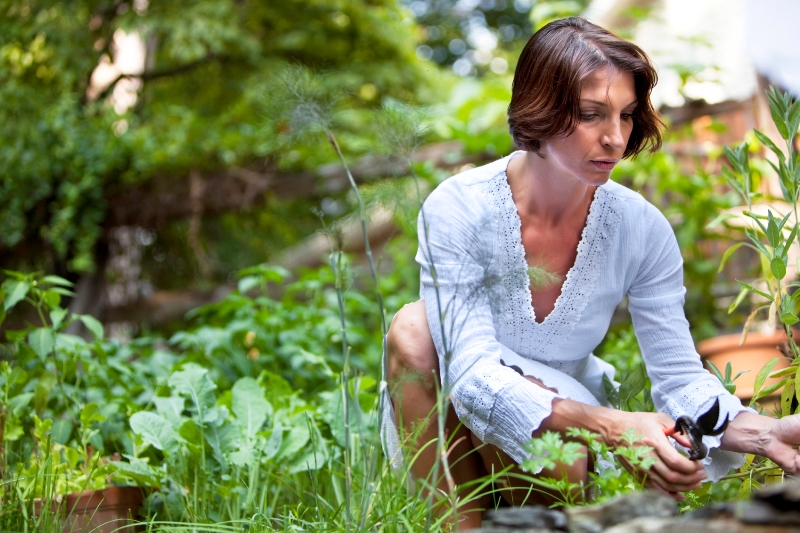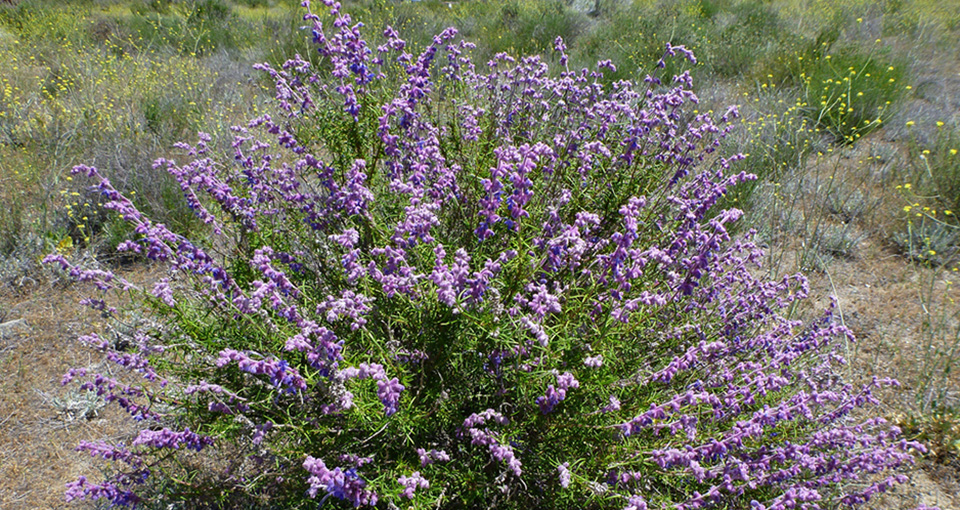
(Photo credit: Corey Sundahl)
Fall is typically the time to start cleaning up and closing down for the winter. Not so in California. Fall's the prime time to plant our spectacular California natives.
- Natives benefit tremendously from a fall planting, as they soak up our winter rains for several months while getting established.
- Plants starting out during the short days of fall and winter put their energy into root development rather than above-ground growth. While they may look like they're asleep on the job, they're actually busy producing roots, preparing to burst with growth when spring rolls around.
Go Native
Let's ignore that they're good-looking and a great addition to any garden and focus on the fact that native plants provide critically needed habitat and food for birds, butterflies, bees and more. These plants provide the nectar and pollen that keep these animals alive. In exchange for providing dinner you'll get a more bountiful harvest. The natives lure in the pollinators who will turn that squash blossom into a zucchini, that tomato flower into a beefsteak.
In addition, natives are drought tolerant, naturally conserving our precious water resources. These beauties can thrive through California's typical five-month-long summer drought with little additional water, unlike so many other common garden plants that demand a weekly drink.
Natives are easy to grow. They don't need any special pampering or fertilizing for their survival. They were born here and they evolved here. They know what to expect from California's climate and soil, and they can tolerate all the neglect you throw their way.
To get a feel for these amazing flora, check out the plants around you when you're out reveling in nature. The best looking ones have found their way into your local nursery or botanical garden sale.
Planting natives is good for your garden, good for the pollinators and good for our planet.
 (Photo credit: Randomtruth/Flickr via Creative Commons)
(Photo credit: Randomtruth/Flickr via Creative Commons)
- California fuschia (Epilobium canum): Manna to the hummingbirds. They'll practically stand in line to get at the brilliant red flowers. This low-growing plant takes full sun and no water once established.
- Columbine (Aquilegia formosa): Our native columbine sports a very hip, compact red-and-yellow flower that looks like a '50s-era rocketship. Likes sun and partial shade.
- Hummingbird sage (Salvia spathacea): A very fragrant plant, some call it "cowboy cologne." It's a favorite of hummingbirds. Bright beet-colored flowers make a great cut flower, which lasts quite a while in water. Can tolerate light shade. Once established, needs little summer water.
- Sticky monkey flower (Mimulus aurantiacus): Grows to approximately three feet tall with a mass of beautiful flowers ranging in color from creamy white to deep orange. Needs full sun and little summer water.
- Wooly blue curls (Trichostema lanatum): This striking plant is a big bee attractor. It has a long flowering season with curling, fuzzy blue flowers--hence the name. Once established, this plant needs little additional watering. Its flowers are used as a stomach-soothing tea. Likes full sun.
- Yarrow (Achillea millefolium): Butterflies love this one, and it blooms continuously throughout summer and early fall. It has beautiful feathery leaves and delicate clusters of pink, white, yellow or red flowers. Yarrow likes full sun and very little additional summer water.
Where to Get Your Natives
Plants sales at your local botanic garden are one of the best places to find natives. Check out their calendars for upcoming sales.
Southern California Resources:
Botanic Garden at UC Riverside
Descanso Gardens
Los Angeles County Arboretum & Botanic Garden
Rancho Santa Ana Botanic Garden
San Diego Botanic Garden
The Santa Barbara Botanic Garden
Northern California Resources:
The Arboretum at UC Santa Cruz
Mendocino Coast Botanical Gardens
San Francisco Botanical Garden
UC Botanical Garden at Berkeley